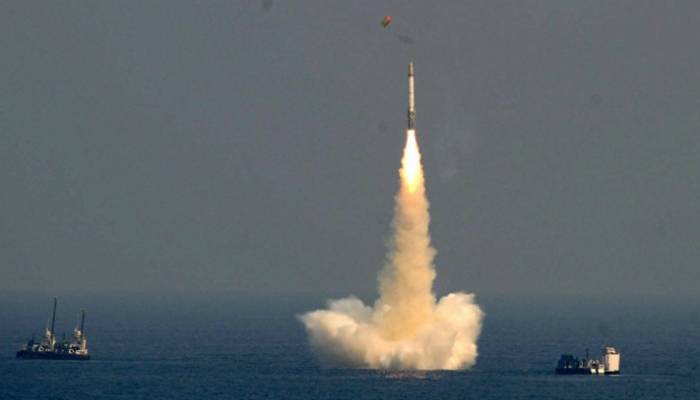The reported testing of nuclear-capable K-4 Submarine-Launched Ballistic Missiles (SLBMs) by India last month from its nuclear-powered INS Arihant has taken India closer to achieving “second-strike capability”. What this means is that India has the capability to hit back at an enemy in a situation where its land-based nuclear arsenal had been neutralised. What it actually means is that the arms race between India and Pakistan continues, because for minimal deterrence to remain credible (the doctrine that justifies us having nuclear weapons in the first place), Pakistan must also move towards having some form of a second strike capability.
Minimal credible deterrence is followed as a doctrine by both states as it ensures strategic stability. But in reality, what it has meant is that, other than an all-out war, border skirmishes and open hostility will continue as usual. The ensuing arms race has inhibited any dialogue between the two countries to resolve their issues, because the default option is always there: using military defence. And that is where the line is drawn.
This is how the security dilemma has worked for us, and it is too far gone now for Pakistan to back down. Thus we scramble for the F-16s from the US. This new capability that India has should put the US support for India’s in the Nuclear Suppliers Group into perspective. Indian nuclear capabilities are for not means for peaceful means. The American position will only help deteriorate strategic stability. In its desire to “balance” China, which actually poses no real threat to American security, the US is helping arm a belligerent state in an already unstable region.
Meanwhile Turkey has stepped into the vacuum created by the US, and has agreed to modernise the Pakistan Air Force’s fleet of F-16s at a cost of $75 million. This is a good development, as unlike the US, Turkey already has a positive image in Pakistan, and dealings with it may go more smoothly. The relationship appears to be more economic than strategic, and there should be and effort to kept it that way. While this situation of F-16s with the US cools down with the Turkish intervention, the Pakistani top brass should look at the issue of the Haqqanis. The terrorist network seems to be the major thorn in the side of the Pak-US relationship, and it is time that this problem was neutralised. We already had a secret American operation on our soil, when Osama Bin Laden was caught in Abbottabad. Pakistan will not be able to live down another such event and should avoid more scolding from the US due to rouge militants on the loose.






